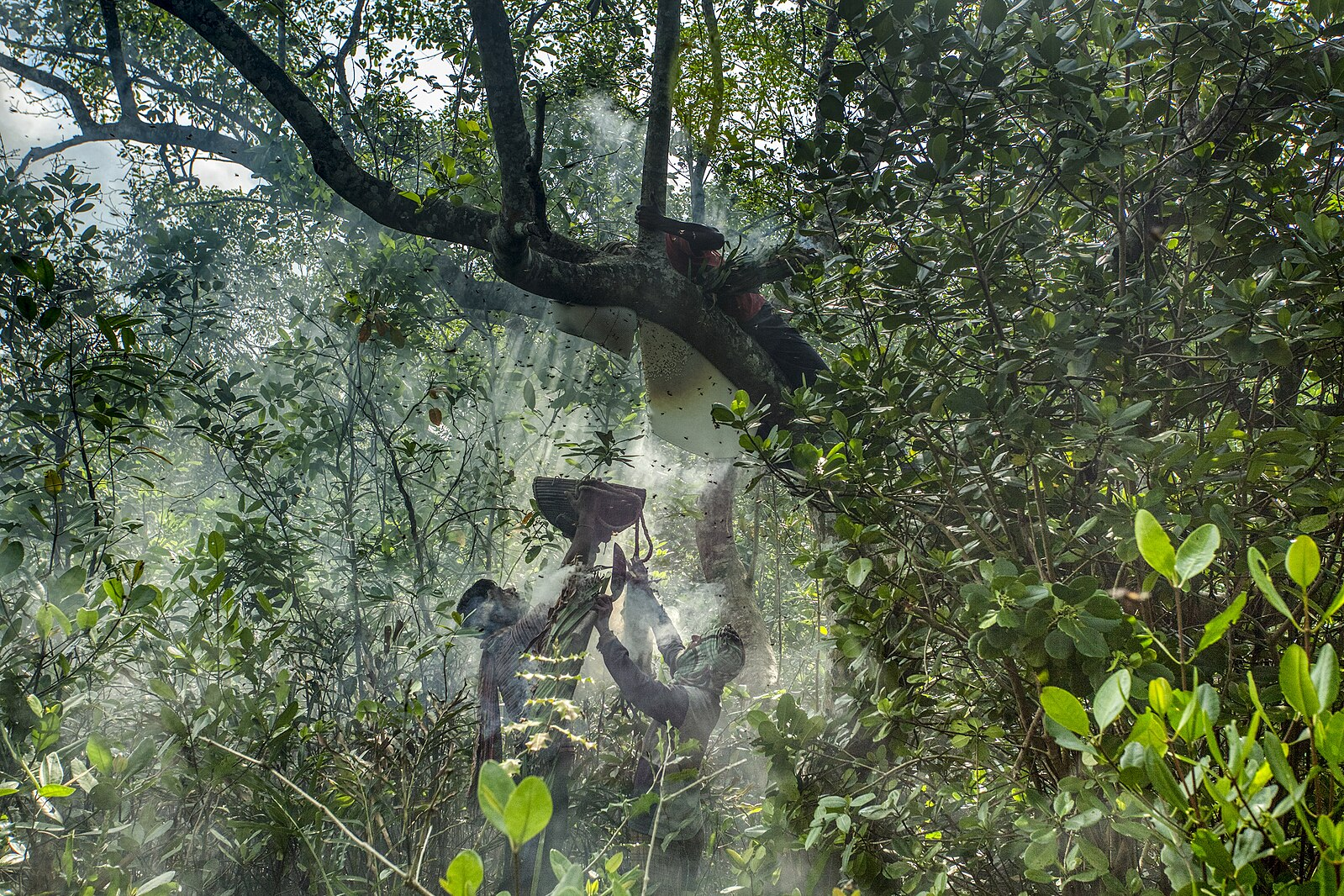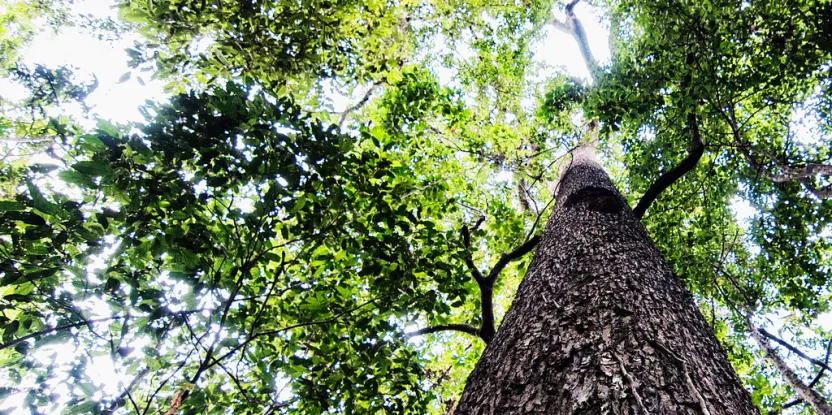IB Syllabus focus:
‘Traditional wild harvesting (e.g., Brazil nuts, truffles, honey, insects) can be sustainable alternatives to land conversion, but claims must be balanced against global food demand and risks from exploiting endangered species.’
Wild harvesting provides food and resources directly from natural ecosystems. Its sustainability depends on ecological limits, cultural practices, and balancing global demand with biodiversity protection.
Understanding Wild Harvesting
Wild harvesting refers to the collection of natural resources such as plants, fungi, and animals directly from their ecosystems rather than from cultivated agricultural systems. It can include harvesting non-timber forest products like Brazil nuts and honey, as well as fungi like truffles or edible insects.
Wild harvesting: The collection of naturally occurring biological resources (plants, fungi, animals) from ecosystems without large-scale cultivation or farming.
This practice has deep cultural and ecological roots, often forming the basis of traditional subsistence economies in indigenous and rural communities.
Examples of Wild Harvesting
Brazil Nuts
Brazil nuts are harvested from wild Amazonian trees, requiring intact rainforest ecosystems for their production. Their extraction incentivises forest conservation, since cleared land cannot sustain these trees.
Truffles
Truffles grow symbiotically with tree roots in temperate forests. Harvesting depends on maintaining forest health and soil biodiversity.
Honey
Wild honey collection supports both pollinator populations and provides livelihoods. However, unsustainable honey hunting can damage bee colonies and local ecosystems.
Insects
Insects such as grasshoppers, termites, or caterpillars are widely consumed in some regions. They provide protein-rich diets with far lower land-use demands than conventional livestock.
Sustainability Benefits
Wild harvesting can be viewed as a sustainable alternative to land conversion for agriculture because:
It requires minimal land clearing, reducing deforestation and habitat loss.
It promotes diverse ecosystems, as species survival is tied to ecosystem integrity.
It supports local economies, especially indigenous communities, with low-cost and accessible resources.
It often has a lower ecological footprint compared to intensive agriculture.
Sustainability (in environmental systems): The use of resources in ways that meet present needs without compromising the ability of future generations to meet their needs.
Challenges and Debates
Despite its advantages, wild harvesting is not free from environmental and social concerns.
Overexploitation
If demand rises beyond ecological limits, wild species may face population decline. For example, overharvesting of edible fungi or endangered animal species can disrupt ecosystem balance.
Global Food Demand
While wild foods contribute locally, they cannot meet global caloric demands on the scale required by modern societies. Agricultural systems remain essential for mass production.
Exploitation of Endangered Species
Some wild harvesting targets rare or vulnerable species, threatening biodiversity. The trade in endangered medicinal plants or animals highlights this risk.
Certification and Traceability
Sustainability claims can be difficult to verify. Labelling products like "sustainably harvested Brazil nuts" may not always reflect actual practices in the field.
Key Processes in Wild Harvesting Systems
Wild harvesting interacts with ecosystems through several processes:
Inputs: Natural regeneration of species, rainfall, nutrient cycles, and pollination.
Transfers: Human collection, transport of harvested goods, and trade networks.
Outputs: Nutritional benefits, economic income, cultural practices, and ecosystem services.
Feedbacks: Overharvesting reduces regeneration, while sustainable practices can reinforce conservation.
Balancing Perspectives
Supportive Views
Seen as climate-friendly because it avoids high fertiliser use and mechanisation.
Encourages forest preservation, as intact ecosystems remain more profitable through harvest than through clearance.
Provides a model for low-input food systems that integrate with natural cycles.
Critical Views
Scale is limited and cannot replace industrial agriculture.
Risks of commodification, where global markets pressure communities to overexploit resources.
Equity concerns, as profits often flow to traders rather than local harvesters.
Sustainable Management Approaches
Strategies to make wild harvesting more sustainable include:
Community-based management: Involving indigenous peoples in governance ensures traditional knowledge is used.
Certification schemes: Eco-labelling systems (e.g., Fairtrade, Forest Stewardship Council) can encourage sustainable trade.
Monitoring and quotas: Setting harvest limits based on ecological research reduces overexploitation risks.
Integration with conservation areas: National parks and reserves can allow controlled wild harvesting while maintaining ecosystem health.
Diversification of sources: Encouraging the use of multiple wild species avoids pressure on single populations.
Cultural and Ethical Dimensions
Wild harvesting is not only ecological but also deeply cultural. Practices such as honey hunting or truffle collection are tied to identity, traditions, and local knowledge systems. Ethical considerations arise when global markets exploit these traditions without fair compensation to the communities maintaining them.
Summary of Sustainability Debates
The debate over wild harvesting reflects the need to weigh local benefits against global challenges:
Locally, it is often sustainable, culturally significant, and biodiversity-friendly.
Globally, it cannot substitute for large-scale agriculture but can supplement diets and economies.
Long-term sustainability depends on management, equity, and respect for ecological limits.

Traditional honey collectors (‘moulis’) harvesting wild honey in the Sundarbans mangrove forests. The practice is culturally significant but exposes collectors to hazards and variable yields, illustrating sustainability and safety trade-offs in wild harvesting. Source.

Upward view of a mature Brazil nut tree (Bertholletia excelsa) in Amazonian rainforest. Commercial Brazil nuts are gathered from wild trees, so maintaining intact forest structure is integral to continued harvests and to sustainability claims. Source.
FAQ
Wild harvesting is often organised, with products entering markets and supply chains, while foraging usually refers to small-scale, personal collection for immediate consumption.
Wild harvesting can involve structured systems like community quotas or certification, whereas foraging is usually informal. The scale and purpose are the key differences.
Indigenous knowledge provides detailed ecological understanding, such as when and how much to harvest without damaging species populations.
Practices often include rotational harvesting, seasonal restrictions, and rituals that ensure respect for ecosystems. These approaches help maintain long-term resource availability.
Certification helps consumers identify products sourced under sustainable practices.
It can increase market value, providing economic incentives for conservation.
It improves traceability and reduces the risk of unsustainable or illegal exploitation.
Certification schemes also empower local harvesters by connecting them to global markets.
Wild harvesting contributes locally by diversifying diets with nutrient-rich foods like insects, mushrooms, and wild fruits.
However, its contribution is mostly supplementary, supporting communities rather than replacing agriculture. It can be vital during food shortages, adding resilience in vulnerable regions.
Overharvesting can reduce species regeneration, leading to population crashes.
This disrupts food webs and may alter ecosystem functions such as pollination or nutrient cycling. Once critical thresholds are crossed, ecosystems may shift, reducing both biodiversity and harvest potential.
Practice Questions
Question 1 (2 marks)
Define the term wild harvesting and give one example of a product obtained through this process.
Mark scheme:
Definition of wild harvesting: collection of naturally occurring biological resources (plants, fungi, animals) from ecosystems without large-scale cultivation or farming. (1 mark)
One suitable example such as Brazil nuts, truffles, honey, or edible insects. (1 mark)
Question 2 (6 marks)
Discuss two benefits and two risks of wild harvesting as a strategy for sustainable food supply.
Mark scheme:
Explanation of a benefit such as reduced need for land conversion/deforestation. (1 mark)
Explanation of a second benefit such as supporting biodiversity, cultural traditions, or providing local economic opportunities. (1 mark)
Explanation of a risk such as overexploitation leading to species decline. (1 mark)
Explanation of a second risk such as inability to meet global food demand or exploitation of endangered species. (1 mark)
Clear linkage of benefits and risks to the concept of sustainability (balancing ecological, social, or economic dimensions). (1 mark)
Balanced discussion showing awareness that while wild harvesting can be sustainable locally, it is limited globally. (1 mark)

